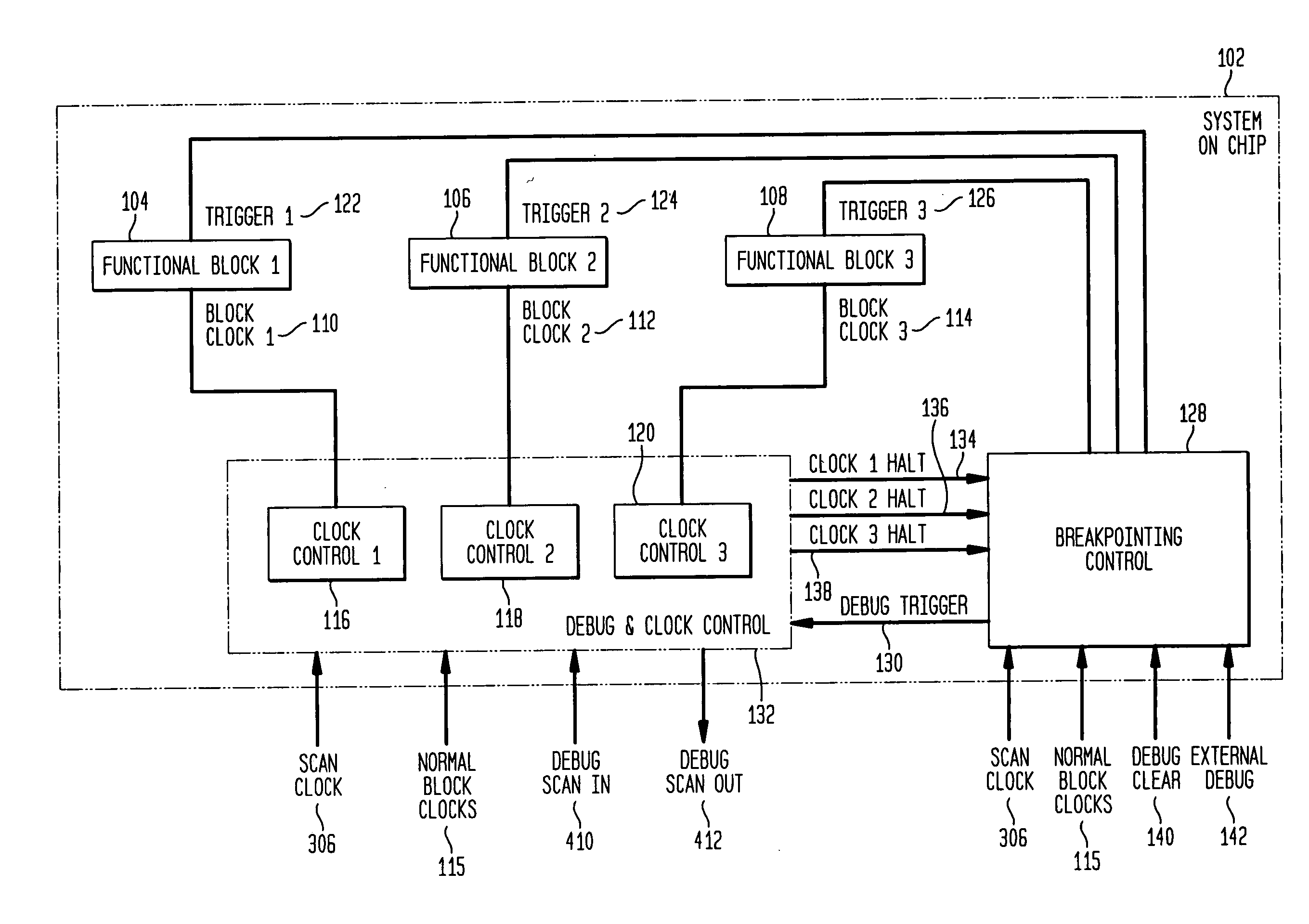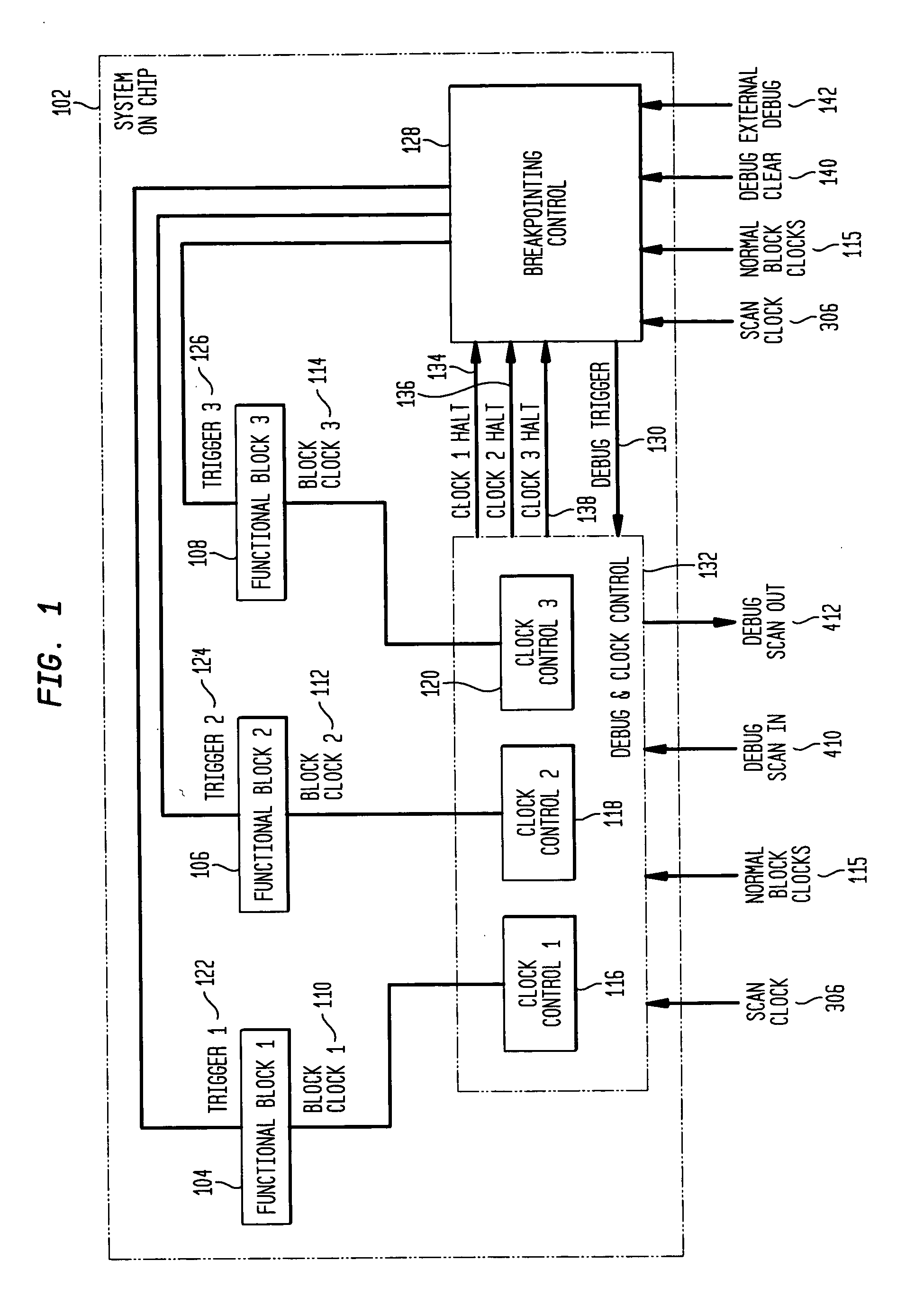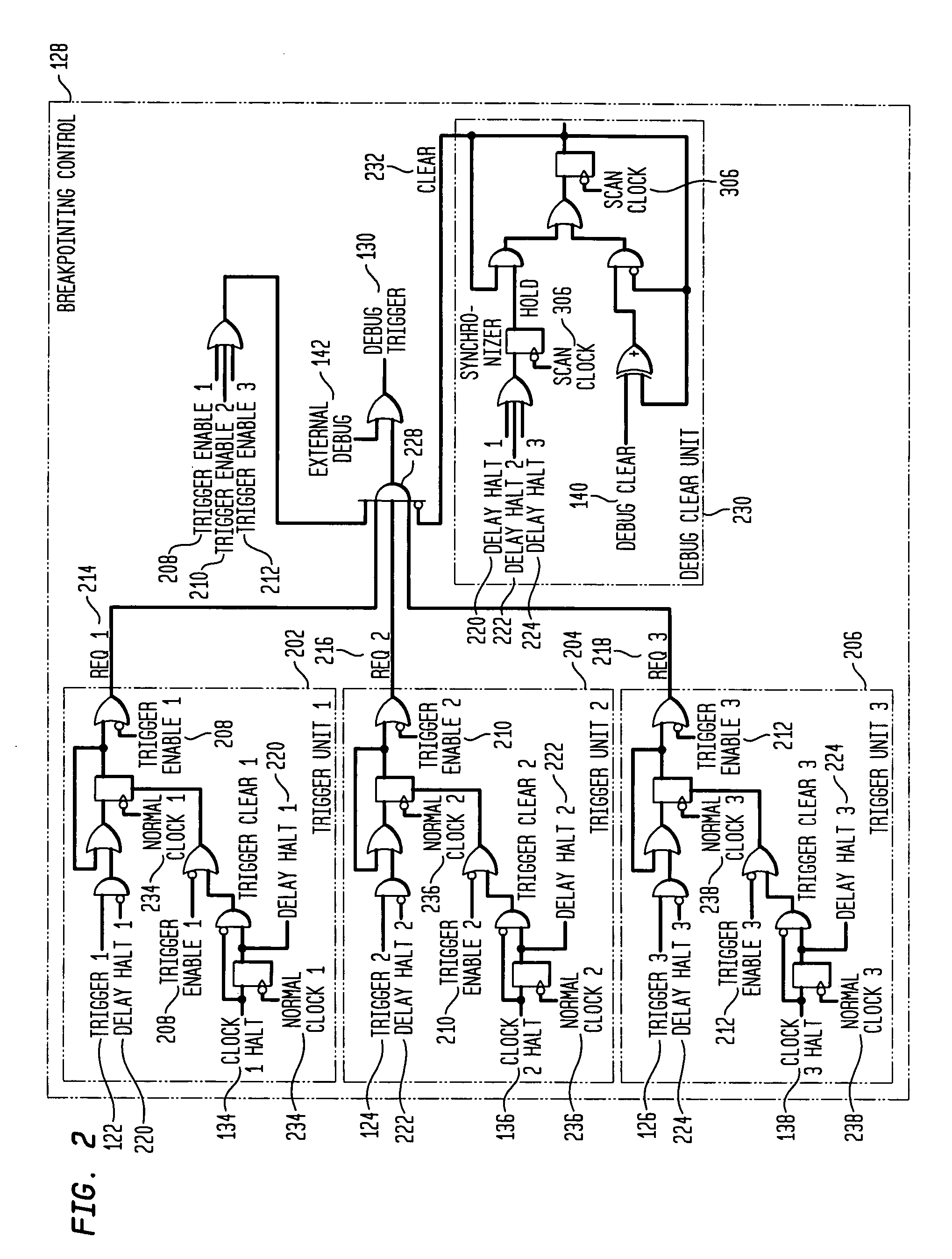System and method for debugging system-on-chips using single or n-cycle stepping
a technology of system-on-chip and n-cycle stepping, applied in the field of system-on-chip and method for debugging complex socs, can solve the problems of difficult task of debugging socs, the design techniques used in socs have not scaled with the complexity of chip design, etc., and achieve the effect of effective debugging
- Summary
- Abstract
- Description
- Claims
- Application Information
AI Technical Summary
Benefits of technology
Problems solved by technology
Method used
Image
Examples
Embodiment Construction
[0021]FIG. 1 illustrates an interface for support of a breakpointing function for an SoC 102. As shown in FIG. 1, SoC 102 includes three functional blocks (104, 106 and 108). FIG. 1 is intended to be a simple example of an SoC as there frequently are far more functional blocks in a typical SoC. Each functional block is shown to be clocked off of a separate clock domain (block clock 1, block clock 2, and block clock 3; items 110, 112 and 114, respectively). There is also illustrated a separate clock control unit (clock control 1, clock control 2 and clock control 3; items 116, 118 and 120, respectively) for each clock domain. If two or more functional blocks share the same clock domain, the clock control unit also would be shared by these functional blocks. These clock control units receive as input a normal block clock signal (collectively, item 115) for each separate clock domain. As shall be further illustrated in FIGS. 2 and 3 below, these normal block clock signals are used to d...
PUM
 Login to View More
Login to View More Abstract
Description
Claims
Application Information
 Login to View More
Login to View More - R&D
- Intellectual Property
- Life Sciences
- Materials
- Tech Scout
- Unparalleled Data Quality
- Higher Quality Content
- 60% Fewer Hallucinations
Browse by: Latest US Patents, China's latest patents, Technical Efficacy Thesaurus, Application Domain, Technology Topic, Popular Technical Reports.
© 2025 PatSnap. All rights reserved.Legal|Privacy policy|Modern Slavery Act Transparency Statement|Sitemap|About US| Contact US: help@patsnap.com



